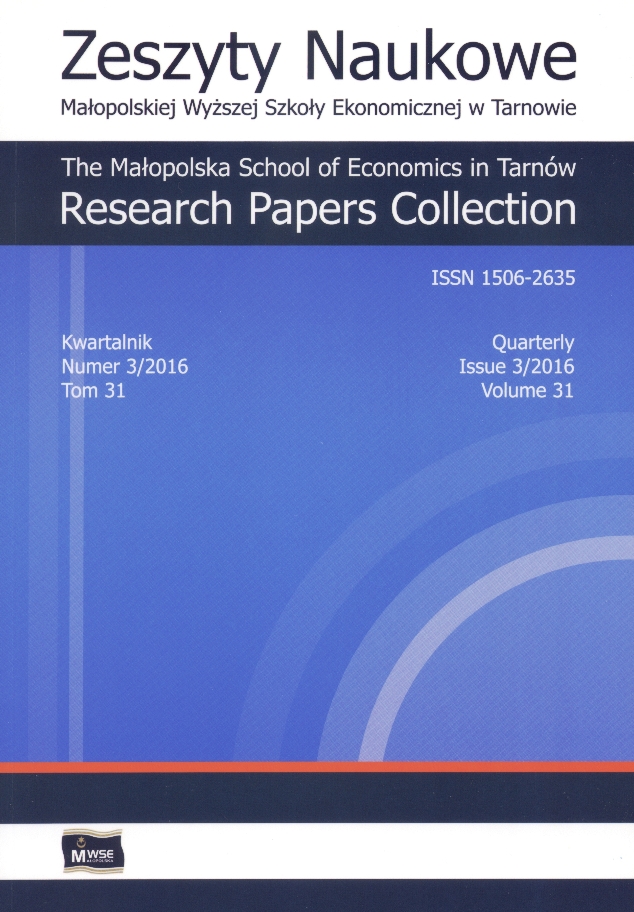Abstract
The article presents the assumptions of process changes for a worker fatigue management system on the example of coal miners. The main factors influencing fatigue during works performed in underground coal mines are identified and can be categorised into the following groups: microclimate, noise and its components, vibration, air composition and air movement (flow), pressure changes, lighting, radiation, dust, machinery and technical measures, psychosocial factors including stress arising from a feeling of own life being threatened and others, such as work organisation, private life stressors, individual factors. Among the factors causing fatigue the travel time to and from work was particularly important. The proposed measures regarding fatigue management are based on an analysis of the relationship between pairs of variables, where for each pair the direction of the impact of connecting two given factors on fatigue and its strengths is set. This resulted in the matrix of factors influencing fatigue among employees, which in turn allowed to make assumptions for the worker fatigue management system. Within the concept of the fatigue management system a subdomain of the recognition of psychomotor states of workers as indicators of the fatigue levels was proposed.
References
Braver, E.R., Preusser, C.W., Preusser, D.F., Baum, H.M., Beilock, R., Ulmer, R.G. (1992). Long hours and fatigue: A survey of tractor-trailer drivers. Journal of Public Health Policy, 13(3), 341–366.
View in Google Scholar
Butlewski, M., Dahlke, G., Drzewiecka, M., Pacholski, L. (2015). Fatigue of miners as a key factor in the work safety system. Procedia Manufacturing, 3, 4732–4739.
View in Google Scholar
Butlewski, M., Hankiewicz, K. (2015). Psychomotor Performance Monitoring System in the Context of Fatigue and Accident Prevention. Procedia Manufacturing, 3, 4860–4867.
View in Google Scholar
Butlewski, M., Jasiulewicz-Kaczmarek, M., Misztal, A., Sławińska, M. (2015). Design methods of reducing human error in practice. W: T. Nowakowski, M. Młyńczak, A. Jodejko-Pietruczuk, S. Werbińska-Wojciechowska (eds.). Safety and Reliability: Methodology and Applications (s. 11011–1106). Proceedings of the European Safety and Reliability Conference ESREL 2014 Wrocław. London: CRC Press. ISBN 978-113802681-0.
View in Google Scholar
Gierlotka, S. (2002). Klimatyczne warunki pracy w kopalniach węgla i ich wpływ na możliwość rażenia prądem elektrycznym pracownika dołowego kopalni. Bezpieczeństwo Pracy, 3, 26–28.
View in Google Scholar
Grzesik, J. (2011). Problemy ochrony zdrowia górników. Referaty wygłoszone na górniczych konferencjach. Sosnowiec: Instytut Medycyny Pracy i Zdrowia Środowiskowego. ISBN 978-83-931504-2-7.
View in Google Scholar
Hamrol, A. (2008). Zarządzanie jakością z przykładami. Warszawa: Wydawnictwo Naukowe PWN. ISBN 978-83-011537-4-8.
View in Google Scholar
ISO/DIS 6385. (2016). Ergonomic principles in the design of work systems.
View in Google Scholar
ISO/TC 176. (2015). Quality Management Principles. Geneva: International Organization for Standardization.
View in Google Scholar
ISO/TR 22100-3. (2016). Safety of machinery – Relationship with ISO 12100. Part 3: Implementation of ergonomic principles in safety standards.
View in Google Scholar
Jonsson, B. (1984). Muscular fatigue and endurance: Basic research and ergonomic applications. W: M. Kumamoto (ed.). Neural and Mechanical Control of Movement (s. 64–76). Kyoto: Yamaguchi Shoten.
View in Google Scholar
Jørgensen, K., Fallentin, N., Kroch-lund, C., Jensen, B. (1988). Electromyography and fatigue during prolonged, low level static contractions. European Journal of Applied Physiology, 57(3), 316–321.
View in Google Scholar
Kleniewski, A. (2003). Osiem zasad zarządzania jakością. Problemy Jakości, 35(1), 18–21.
View in Google Scholar
Konopko, W. (red.). (2013). Bezpieczeństwo pracy w kopalniach węgla kamiennego. T. 1: Górnictwo i środowisko. Katowice: Główny Instytut Górnictwa. ISBN 9788361126607.
View in Google Scholar
Koźmiński, A.K., Piotrowski, W. (1995). Zarządzanie. Teoria i praktyka. Warszawa: Wydawnictwo Naukowe PWN. ISBN 8301118431.
View in Google Scholar
Macek, D. (2011). Przepisy prawne i zagrożenia w górnictwie. Katowice: Wydawnictwo Śląsk. ISBN 9788371646317.
View in Google Scholar
Pietrasiński, Z. (1971). Psychologia wprowadzania zmiany. Wektory, 1.
View in Google Scholar
Reynolds, B., Martinez, S., Van Latum, L. (2011). Current best practices approach to operator fatigue risk management. White PaPer. Modular Mining Systems, Inc.
View in Google Scholar
Rosiek, F., Sikora, M., Urbański, J. (2000). Wyznaczanie ciśnienia powietrza w kopalniach LGOM. Prace Naukowe Instytutu Górnictwa Politechniki Wrocławskiej, 87, 93–101.
View in Google Scholar
Słota, Z. (2011). Określenie wpływu wydatku energetycznego, aklimatyzacji i ubioru na obciążenie termiczne organizmu pracowników w wyrobiskach kopalń podziemnych. Gliwice: Wydawnictwo Politechniki Śląskiej. ISBN 9788373358836.
View in Google Scholar
Staniec, K., Butlewski, M., Nowicki, M., Kowal, M., Kubal, S., Piotrowski, P. (2014). System zarządzania zmęczeniem u pracowników zatrudnionych w wyrobiskach podziemnych zakładów górniczych wydobywających węgiel kamienny. W: D. Musioł, P. Perzyna (red.). Poprawa bezpieczeństwa pracy w kopalniach: teoria i praktyka. Praca zbiorowa. Gliwice: Politechnika Śląska. Instytut Eksploatacji Złóż. ISBN 9788392625582.
View in Google Scholar
Szlązak, N., Obracaj, D. (2004). Stan zapylenia powietrza w wyrobiskach ślepych drążonych kombajnami. Przegląd Górniczy, 11, 27–33.
View in Google Scholar
Szparaga, B. (1998). Znowelizowana norma oświetlenia podziemi kopalń. Omówienie zmian i niektórych wymagań. WUG: Bezpieczeństwo Pracy i Ochrona Środowiska w Górnictwie, 3, 40–43.
View in Google Scholar
Trenczek, S. (2007). Głębokość prowadzenia robót górniczych a zagrożenia aerologiczne. Przegląd Górniczy, 63(6), 1–8.
View in Google Scholar
Trzcieniecki, J. (1979). Projektowanie systemów zarządzania. Warszawa: PWN.
View in Google Scholar
Turek, M. (2009). Eksploatacja podziemna pokładów węgla kamiennego – współczesne wyzwania. Część 5: Maszynowe urabianie skał. Wiadomości Górnicze, 60(7–8), 475–485.
View in Google Scholar
Więcek-Janka, E. (2006). Zmiany i konflikty w organizacji. Poznań: Wydawnictwo Politechniki Poznańskiej. ISBN 8371433700.
View in Google Scholar
Wyrwicka, M., Jaźwińska, D. (2014). Percepcja uwarunkowań rozwoju przedsiębiorstw. Economics and Management, 2, 259–275.
View in Google Scholar
© Copyright by Małopolska School of Economics in Tarnów. The articles are available under the Creative Commons Attribution NonCommercial-NoDerivatives 4.0 International License


